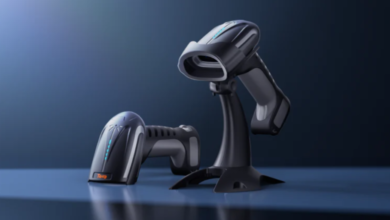The Ultimate Guide to Choosing a Home Wind Turbine

As the demand for renewable energy solutions continues to rise, homeowners are seeking sustainable alternatives. Solar panels have long been a popular choice, but a home wind turbine is also an efficient and eco-friendly way to generate electricity. In this guide, we’ll explore everything you need to know about home wind turbines, from how they work to selecting the right model for your needs.
Facts about Wind Generator for Home
- What is a Home Wind Turbine?
- Benefits of Using Wind Power for Homes
- How to Choose the Right Residential Wind Turbine
What is a Home Wind Turbine?
A home wind turbine is a renewable energy system designed to generate electricity by harnessing the power of the wind. Also, it functions similarly to larger wind farms but on a smaller scale, making it suitable for individual homes or properties.
These turbines consist of rotating blades, a generator, and a tower. As the wind blows, the blades spin, converting kinetic energy into mechanical power. This power is then transferred to a generator, which produces electricity that can be used to power household appliances, lighting, and other electrical systems.
See also: Exploring the Magic of Text to Image Generators
Benefits of Using Wind Power for Homes
Harnessing wind power for homes offers numerous advantages. Thus making it an attractive renewable energy solution for homeowners. Here are some key benefits:
1. Lower Electricity Bills
One of the biggest advantages of using a residential wind turbine is the potential for significant energy savings. By generating your own electricity, you can reduce your reliance on the grid and cut down on monthly utility costs. In areas with strong and consistent wind speeds, it can produce enough power to cover a large portion of household energy needs.
2. Reduced Carbon Footprint
Switching to wind power helps reduce dependence on fossil fuels, leading to lower carbon emissions. Unlike coal or gas-powered electricity, wind energy is clean, renewable, and does not release harmful pollutants into the environment. Also, homeowners can contribute to a greener future and support global efforts to combat climate change.
3. Energy Independence
With a wind generator for home use, you are less vulnerable to power outages and fluctuations in electricity prices. Generating your own renewable energy gives you greater control over your power supply. For off-grid homes or rural areas, it can provide a reliable and self-sufficient source of electricity.
4. Government Incentives and Rebates
Many governments offer financial incentives to encourage the use of renewable energy solutions. Homeowners may be eligible for tax credits, grants, or rebates that help offset installation costs. In some cases, excess electricity generated can be sold back to the grid through net metering programs, providing additional financial benefits.
How to Choose the Right Residential Wind Turbine
Investing in a home wind turbine can be a great way to generate renewable energy and reduce electricity costs. However, choosing the right one requires careful consideration of several factors to ensure optimal performance and efficiency. Here are the key aspects to keep in mind when selecting:
1. Wind Speed in Your Area
The efficiency of a home wind turbine largely depends on the wind speed in your location. Most wind turbines require a minimum wind speed of 5–6 m/s (11–13 mph) to generate a meaningful amount of power. Before making a purchase, check local wind maps or use an anemometer to measure the average wind speed in your area. If wind conditions are too weak, a wind turbine may not be the best energy solution for your home.
2. Energy Requirements
Before installing a wind generator for home, it’s important to calculate your household’s energy consumption. This will help determine the size and power output of the turbine needed. Review your electricity bills to estimate your average monthly usage, measured in kilowatt-hours (kWh). If you plan to rely solely on wind power for homes, a higher-capacity turbine may be necessary. Alternatively, combining wind and solar energy can provide a more stable power supply. For example, Nature’s Generator lets you do this. Also, the Nature’s Generator Wind Turbine lets you use wind power and provide another option to charge your Nature’s Generator. Furthermore, it is made with cast aluminum alloy that is available to install on land, water, or wherever you want to put it.
Specifications:
Power Rating
- Rated Power: 150 watts at 27 MPH
- Maximum Wind Speed: 110 MPH
Material
- Blades: Fiberglass nylon composite
- Body: Cast aluminum alloy with powder coating
- Cable: 12AWG pure copper cable
Connectors
- Wind Turbine Cable Connectors: Weatherproof M19 3P connectors
- Wind Input Connectors: Anderson connectors
- Yaw Compatibility: Suitable for 1.5-inch Schedule 40 pipes or towers
General Specifications
- Rotor Diameter: 51 inches (1.3 m)
- Weight: 22 lbs (10 kg), excluding cables and controller box
- Certifications: CE, RoHS compliant
3. Turbine Size and Capacity
Residential wind turbines come in various sizes, from small rooftop models to larger freestanding units. The right turbine for you depends on:
- Rotor diameter: Larger blades capture more wind and generate more power.
- Power output: Measured in kilowatts (kW), a typical home wind turbine ranges from 400 watts to 10 kW, depending on energy needs.
- Tower height: Taller towers access stronger, more consistent wind, improving efficiency.
4. Installation Costs
The total cost of a wind turbine includes more than just the equipment. Key expenses to consider are:
- Turbine purchase price: Can range from $1,000 for small models to over $20,000 for high-capacity systems.
- Installation costs: Includes site preparation, mounting, wiring, and professional labor.
- Maintenance and repairs: Routine upkeep is needed to keep the system running efficiently.
- Permits and inspections: Some areas require zoning approval before installation.
Conclusion
Investing in a home wind turbine is a powerful step towards energy independence and sustainability. With various models available, selecting the right one requires careful consideration of factors such as wind speed, energy needs, and installation costs. As the demand for clean energy grows, it continues to be an attractive option. Now with all the information you have on hand, you can browse the market and choose the right wind turbine for your home.




